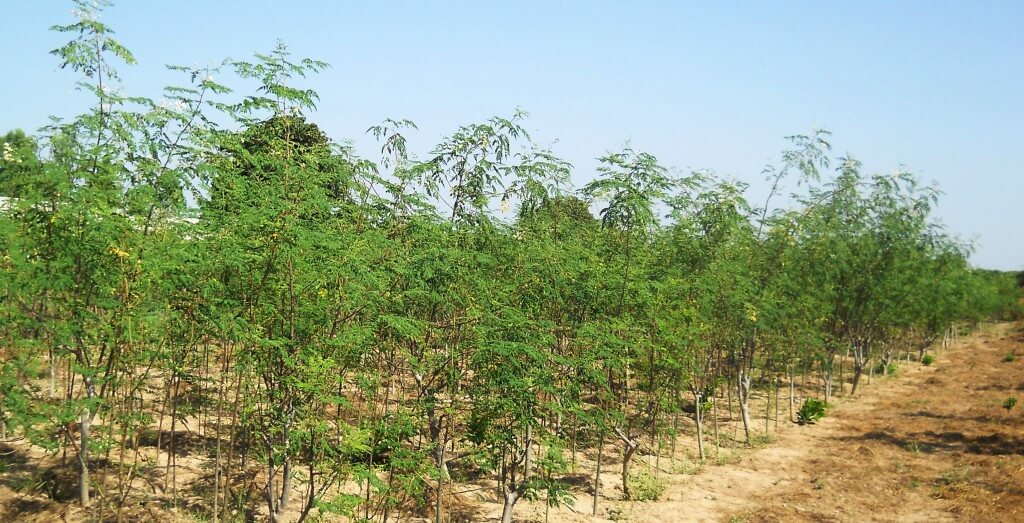Moringa plantation
Since 2012 around 10,000 Moringa Oleifera trees have been planted on the area behind Jahaly Health Centre and Kindergarten. You may see the plantation here on Google Maps. In 2018 and 2020, two bush fires in the neighbourhood spread to the plantation and destroyed most of the trees. Currently (May 2021), the plantation is being replanted.
After reforestation, the plantation now consists of about 2,200 trees. The spacing was increased to achieve better growth. The trees were professionally pruned and fertilized. The pH of the soil has been improved.
The detailed instructions “How to Moringa” for tree pruning, soil liming, fertilizing with many photos can be found here.
The corresponding video tutorials – additionally provided with a translation in Serahule, the local language in Jahaly – can be found at the bottom of this page.
Instructions and tutorials are free for use. However, we kindly ask for voluntary donations here.
Moringa Oleifera is supposed to be the most nutritious plant on earth. The northern countries including in Germany currently see an increasing demand for Moringa products.
Producing and selling “The Gambia Moringa” Products (oil and soap) in Europe aims to finance all projects on the long term. All revenue goes directly back to our projects in The Gambia.
Our vision is that the projects in Jahaly one day are able to partly finance themselves through the proceeds from the Moringa plantation. Even now the cultivation of the plantation creates employment in Jahaly. At the moment Project Aid employs five workers who daily water the growing Moringa trees during the dry season. During the rainy season they do the weeding.
For the harvest of Moringa leaves and seeds a large group of women from Jahaly is employed for about ten days three times a year. They also do the subsequent first processing directly in Jahaly: drying, production of Moringa powder and tea as well as packaging.
For watering a deep well has been drilled on the plantation. The water pump is driven by the Health Centre´s solar power system. Numerous taps are available on the plantation. Using water hoses and irrigation ditches it takes the workers two days to water all the trees of the plantation again. The trees must be watered at least until their roots finally have reached the groundwater, which is very deep on this site.
The trees are fertilized using natural fertilizer, a mixture of cow dung, straw and crushed groundnut shells.
In the first years, the harvested and washed Moringa leaves were gently dried in two steps: first, they were pre-dried overnight in an empty room at the Jahaly health Centre. For this purpose, the leaves were spread out on large wooden frames covered with mosquito netting. The next day, the leaves were dried in special drying ovens at no more than 40 degrees heat and then processed into powder or tea and packaged. In the meantime, we concentrate exclusively on extracting Moringa oil from the Moringa pods.
At the start of the plantation in 2012, there were a handful of seeds only, a gift from the garden of Lang Kinteh, a fellow Moringa expert in The Gambia. An German intern of Project Aid, Jan Libera, has then sown the seeds into polybags in Jahaly, raised them and later implemented the young trees on the plantation. Along with several helpers he has cleared the grounds of the plantation, fenced it and divided it into different lots.

